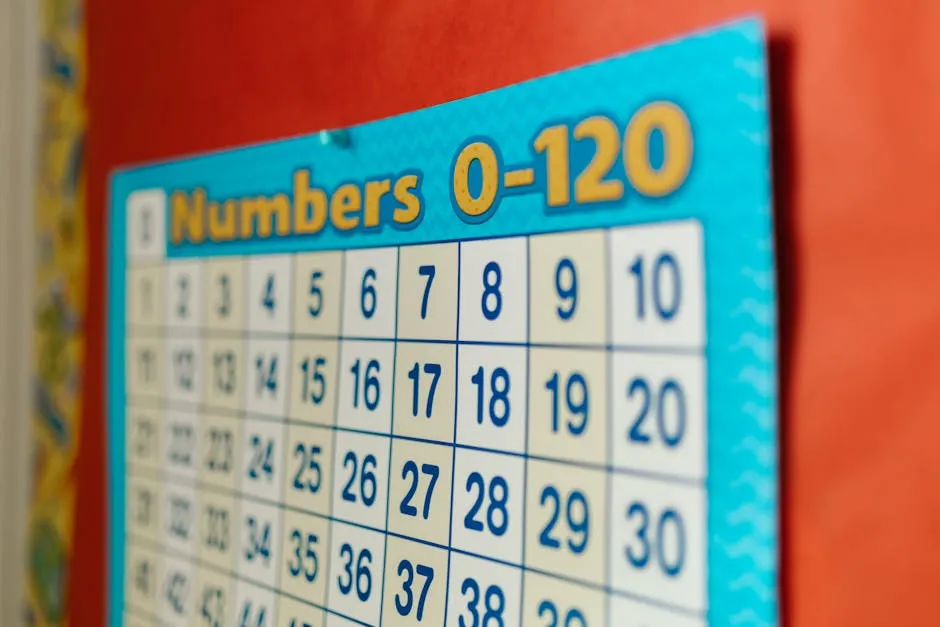Introduction
In the bustling corridors of New York City schools, students’ voices ring louder than ever, thanks to the Student Perception Survey. This invaluable tool not only provides educators with insights into their teaching practices but also empowers students to express their experiences and expectations. Imagine a classroom where students feel heard and understood—this is the vision that the Student Perception Survey aims to achieve.
The survey serves as a channel for students in grades 6-12 to communicate their thoughts on various aspects of their educational experience. It covers a range of topics, from classroom engagement to teacher support. By capturing these perceptions, schools can make informed decisions that lead to tangible improvements in teaching methods and learning environments.
Why should we care about student feedback? Well, students are the heart of any educational institution. When they share their insights, it helps educators understand what works and what doesn’t. This feedback can also highlight areas needing attention, ensuring that students receive the best possible education.
Moreover, the survey is designed with confidentiality in mind. Students complete it without fear of repercussions, knowing their responses will remain anonymous. This approach encourages honest feedback, fostering a culture of trust and openness.
In this blog post, we’ll explore the mechanics of the survey, its importance, and how it can be effectively utilized to enhance the educational experience in NYC. Ready to embark on this journey of educational transformation? Let’s begin!

Summary
The Student Perception Survey (SPS) is a crucial tool for collecting feedback from students in grades 6-12 across New York City. By understanding student perceptions, educators can refine teaching strategies, improve classroom environments, and foster better student-teacher relationships. This article covers the survey’s objectives, structure, and administration process while emphasizing its role in professional development for educators.
We’ll explore:
- What the Student Perception Survey entails and its significance in NYC schools.
- The key components of effective surveys, including types of questions and best practices for administration.
- Insights on how to interpret survey results and apply them to improve teaching practices.
- Real-world examples of successful implementation in various schools.
- Frequently asked questions addressing common concerns about the survey’s confidentiality and voluntary nature.
Curious about how student feedback can revolutionize classrooms? Keep reading to uncover the transformative power of the Student Perception Survey!

The Importance of Student Perception Surveys
Understanding Student Perception
Student perception refers to how learners interpret their educational experiences. This concept encompasses their feelings, beliefs, and expectations about school life. Understanding these perceptions is crucial. It shapes the educational experience and influences learning outcomes in significant ways.
When students feel valued and heard, their engagement levels soar. They become active participants in their learning journey. On the flip side, negative perceptions can lead to disengagement. This disengagement affects academic performance and overall well-being. Therefore, knowing how students perceive their environment is essential for creating a supportive learning atmosphere.
Perceptions act like a lens through which students view their education. A positive lens encourages collaboration and enthusiasm. Conversely, a negative lens may lead to apathy or frustration. Educators must grasp these insights to understand the classroom dynamics fully. By tapping into student perceptions, schools can tailor their approaches to meet diverse needs.

Benefits of Conducting Surveys
Gathering student feedback through surveys offers numerous advantages. For starters, it enhances teaching strategies. Educators can pinpoint what works and what doesn’t. By analyzing responses, they can make informed adjustments that resonate with students. Plus, for those educators looking to dive deeper into classroom engagement, a Classroom Engagement Activities Book is a must-have resource to spice up lessons and keep students on their toes!
Surveys also contribute to improved classroom environments. When students express their thoughts, schools can identify areas needing attention. For instance, if many students feel unsupported, teachers can implement strategies to foster better relationships. This proactive approach leads to a more positive and productive classroom atmosphere.
Studies show that schools utilizing student perception surveys experience notable improvements. A report from Panorama Education found that schools that regularly seek student feedback see a 10% increase in student engagement. Additionally, the National Center for Education Statistics highlights that schools incorporating student feedback effectively improve student-teacher relationships. This demonstrates the tangible impact of listening to students.

Aligning Surveys with Educational Frameworks
To maximize their effectiveness, student perception surveys should align with established educational frameworks. One prominent example is the Danielson Framework for Teaching. This framework emphasizes various aspects of teaching quality, such as planning, instruction, and classroom environment. By aligning surveys with this framework, schools can gain insights into specific areas of teaching practice.
Furthermore, integrating social-emotional learning (SEL) competencies into surveys is critical. The Collaborative for Academic, Social, and Emotional Learning (CASEL) outlines five key competencies: self-awareness, self-management, social awareness, relationship skills, and responsible decision-making. By incorporating questions related to these competencies, surveys can provide a more holistic view of student experiences.
Understanding students’ social and emotional strengths and needs is vital. It allows educators to support not only academic growth but also emotional well-being. Surveys play a crucial role in identifying these dimensions, ultimately leading to more responsive and compassionate educational practices.
In summary, student perception surveys are vital tools for enhancing educational experiences. By understanding student perceptions, leveraging feedback, and aligning with educational frameworks, schools can create meaningful change. Engaging students in this process empowers them and fosters a positive learning environment where everyone thrives.

Best Practices for Survey Administration
Planning a successful student perception survey requires thoughtful execution. Start by defining clear objectives. What do you want to learn from your students? Each question should serve a purpose. Next, choose the right timing. Surveys administered at the end of a term may yield different insights than those given mid-year. Consider students’ emotional states. A busy exam week might not be the best time for feedback.
Context also matters. Explain the survey’s purpose to students. When they understand why their input is valuable, they’re more likely to engage. Remind them that their voices matter. This builds trust and encourages honesty.
Finally, ensure a smooth administration process. Use online platforms for easy access. Allow ample time for completion, ideally around 30 minutes. Their feedback deserves consideration, so create a comfortable environment for them to express their thoughts.

Ensuring Confidentiality and Voluntary Participation
Anonymity is paramount in student surveys. Students must feel safe sharing their opinions without fear of repercussions. Communicate this clearly. Assure them that their responses are confidential. For instance, students won’t provide names or ID numbers. This helps cultivate a culture of trust.
The opt-out process must also be straightforward. Families should be informed that participation is voluntary. Communicate this information effectively to students and parents. If a student decides not to participate, they should have the option to skip questions or withdraw at any point. This flexibility respects their comfort levels while maintaining the integrity of the data collected.
By prioritizing confidentiality and voluntary participation, schools can foster an environment that encourages honest feedback and ultimately leads to meaningful improvements in educational practices.

Case Studies: Success Stories from NYC Schools
New York City schools have embraced the Student Perception Survey, leading to remarkable transformations. One shining example is PS 123, where teachers acted on feedback revealing that students felt disengaged during math lessons. Teachers revamped their approach, incorporating more interactive activities. The result? A 30% increase in student engagement scores!
Principal Sarah Thompson proudly states, “Thanks to the survey, we discovered that students craved more hands-on learning. Now, our classrooms buzz with excitement!”
Another inspiring story comes from MS 45, where survey results indicated a need for improved teacher-student relationships. The school initiated a mentorship program pairing teachers with students. This strategy not only fostered trust but also led to an impressive 25% improvement in students feeling supported in their learning.
Teacher Mark Rivera shares, “The survey gave us a platform to understand our students better. The mentorship program has changed the dynamic in our classrooms for the better.”
These success stories illustrate the power of student feedback. Schools that actively listen to their students can create more engaging, supportive, and productive learning environments. For those looking to enhance their teaching toolkit, consider adding some Interactive Learning Tools for Teachers to your classroom for even more engagement!

Professional Development and Training
Utilizing Survey Results for Educator Growth
Harnessing the insights from student perception surveys can significantly enhance professional development for educators. These results serve as a compass, guiding teachers toward areas for improvement while celebrating their strengths.
For instance, after reviewing survey feedback, a group of educators at a Brooklyn high school participated in a targeted training program. This program focused on interpreting survey data and applying it to instructional strategies. Teachers learned to set specific, data-informed goals based on student feedback. Consequently, the school saw a 20% rise in overall student satisfaction.
Workshops designed around this concept are gaining popularity. They encourage educators to engage with survey results actively. Not only do these sessions provide valuable skills, but they also foster a collaborative environment where teachers can share best practices and support each other’s growth.

Resources for Educators
Educators looking to maximize the impact of survey results have a wealth of resources available to them. One key resource is the Student Perception Survey Reports Guide, which offers step-by-step instructions on understanding survey outcomes. It’s a great starting point for educators eager to turn feedback into action.
Additionally, the Teacher’s Reflection Guide from Panorama Education is a fantastic tool. This guide encourages teachers to reflect on feedback and set actionable goals. By engaging in reflective practices, educators can continuously improve their teaching methods.
For those who thrive in communities, online platforms like WeTeachNYC provide spaces for sharing experiences and best practices. Educators can connect, discuss challenges, and celebrate successes. And let’s not forget about the power of a well-organized Teacher Planner Notebook to keep everything in tip-top shape!
Moreover, training sessions, like the one scheduled for May 1, 2024, equip teachers with strategies to interpret and act on survey feedback effectively. Joining such workshops can be a game-changer in an educator’s professional journey.
With these resources at their fingertips, educators can create a more dynamic and responsive learning environment. Embracing student feedback ultimately leads to improved teaching practices and enhanced student experiences.

Conclusion
The Student Perception Survey is more than just a questionnaire. It’s a bridge connecting students and educators in New York City schools. By actively prioritizing student feedback, educators pave the way for more responsive and engaging learning environments. Imagine a school where students feel empowered to share their thoughts without fear, leading to meaningful dialogue and transformative change.
As we look to the future, amplifying student voices becomes crucial. The insights gained from these surveys offer invaluable data that can reshape educational practices. Whether it’s improving teaching methods or creating a more inclusive classroom atmosphere, the potential for positive change is immense.
Let’s commit to listening to our students. Their experiences and perceptions are vital for their academic success and emotional well-being. By embracing feedback, we foster a culture of continuous improvement and innovation in education. Together, we can create an environment where every student feels valued and heard.
In this journey of growth, collaboration is key. Educators, administrators, and students must work hand in hand. The Student Perception Survey is a great starting point, but it’s the ongoing commitment to dialogue and action that will truly make a difference. Let’s evolve together for the benefit of our students and ensure their voices shape the future of education!

FAQs
What is a Student Perception Survey?
A Student Perception Survey is designed to gather feedback from students about their educational experiences. It aims to understand how students feel regarding classroom dynamics, teaching effectiveness, and overall school environment. The target audience typically includes students in grades 6-12 across various NYC schools.
Who can participate in the survey?
Students in grades 6-12 are eligible to participate. Participation is voluntary, and students can choose to opt out if they feel uncomfortable. This voluntary nature is essential as it encourages honest feedback while respecting students’ comfort levels.
How is student confidentiality maintained?
Confidentiality is a top priority in the Student Perception Survey. Students are not required to provide personal identifiers, such as names or ID numbers. This anonymity ensures that responses remain confidential, allowing students to share their thoughts openly.
What types of questions are included in the survey?
The survey typically includes a mix of close-ended and open-ended questions. For example, students might rate their feelings about classroom engagement, teacher support, and the overall learning environment. Categories often cover pedagogical effectiveness, classroom climate, and teacher-student relationships.
How can survey results be used to improve teaching practices?
Educators can analyze survey feedback to identify strengths and areas needing improvement. By setting actionable goals based on this feedback, teachers can tailor their instructional strategies. For instance, if students express the need for more interactive lessons, educators can adjust their methods accordingly.
Where can I find more information about the Student Perception Survey?
For additional information, you can visit the official website at [StudentPerceptionSurvey.nyc](http://StudentPerceptionSurvey.nyc) or contact your child’s school. These resources provide comprehensive details about the survey process, results interpretation, and any upcoming training sessions for educators.
Please let us know what you think about our content by leaving a comment down below!
Thank you for reading till here 🙂
All images from Pexels




